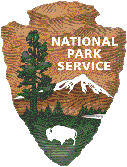What Makes National Heritage Areas Valuable
National Heritage Areas are designated by Congress as places where natural, cultural, historic, and scenic resources combine to form a cohesive, nationally-important landscape. Inaugurated in 1984 with the designation of the Illinois and Michigan Canal National Heritage Corridor, the National Heritage Areas movement now encompasses 49 areas, ranging from factory towns and city neighborhoods to farmland and battlefields.
Though still relatively new, the National Heritage Area approach has already been incredibly successful, creating thousands of new conservation, preservation, and historian jobs in communities across the country. Each year, more and more regions seek recognition under the program – a testament to the need of such a program.
Some facts about National Heritage Areas:
- National Heritage Areas on average leverage every federal dollar into $5.50 of additional public and private investment.
- National Heritage Areas engage the surrounding communities. In 2008, National Heritage Areas worked with more than 4,250 partners to complete projects ranging from the development of new elementary school curriculums to the removal of invasive species along our nation’s waterways.
- There is a continued demand for the program. To date, Congress has established 49 National Heritage Areas, with increased interest from communities each year.
- An estimated 63.8 million people visited the existing 27 Heritage Areas in 2005.
- National Heritage Areas create jobs, generate revenues for local governments, and benefit local economies through revitalization and heritage tourism.
- According to a recent study, 118 million leisure travelers participate in cultural and heritage activities, contributing $192 billion annually to the U.S. economy.
- On average, heritage travelers travel more often, spend more per trip ($994 vs. $611), and spend more on cultural and heritage activities than other activities.

